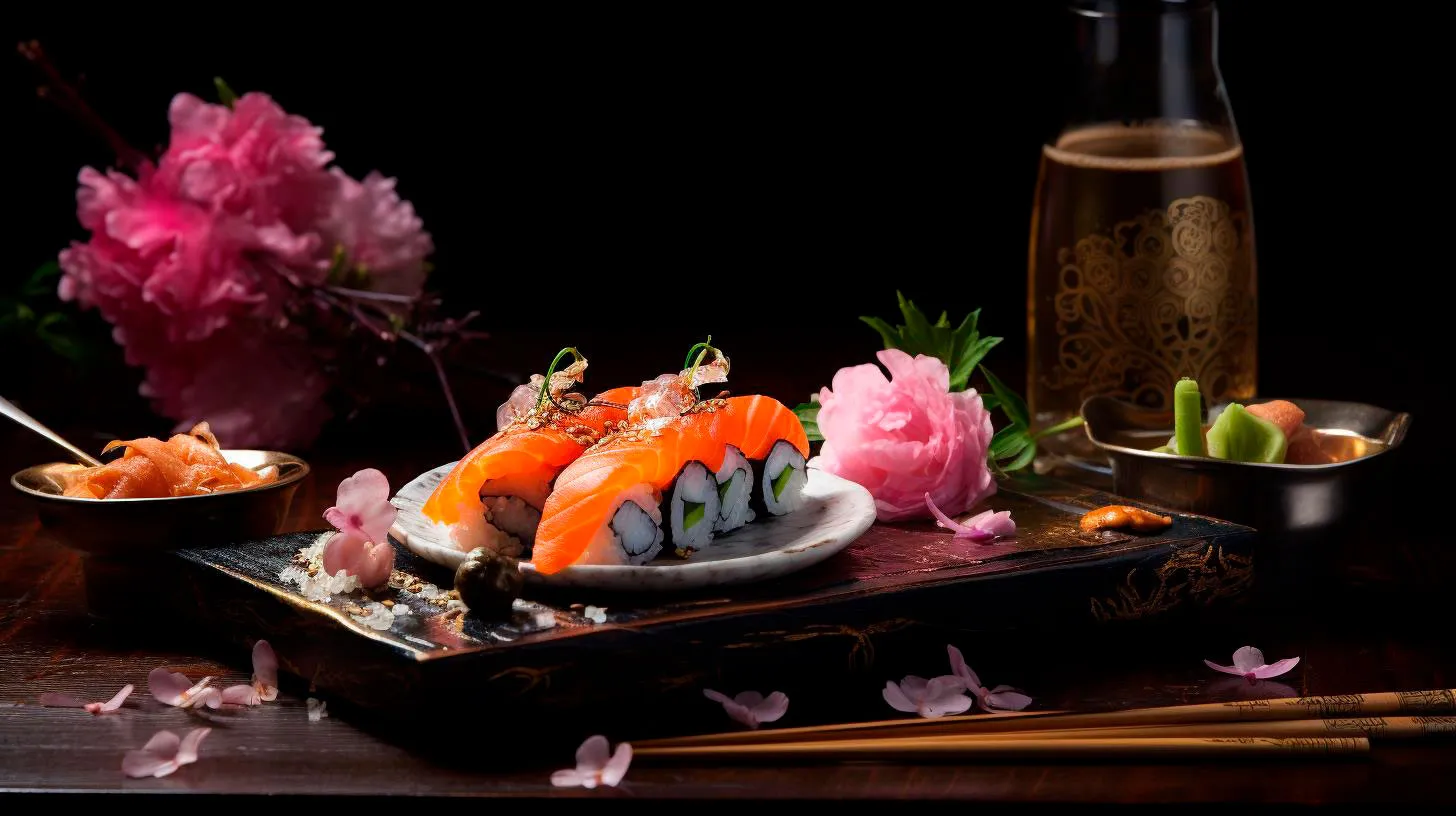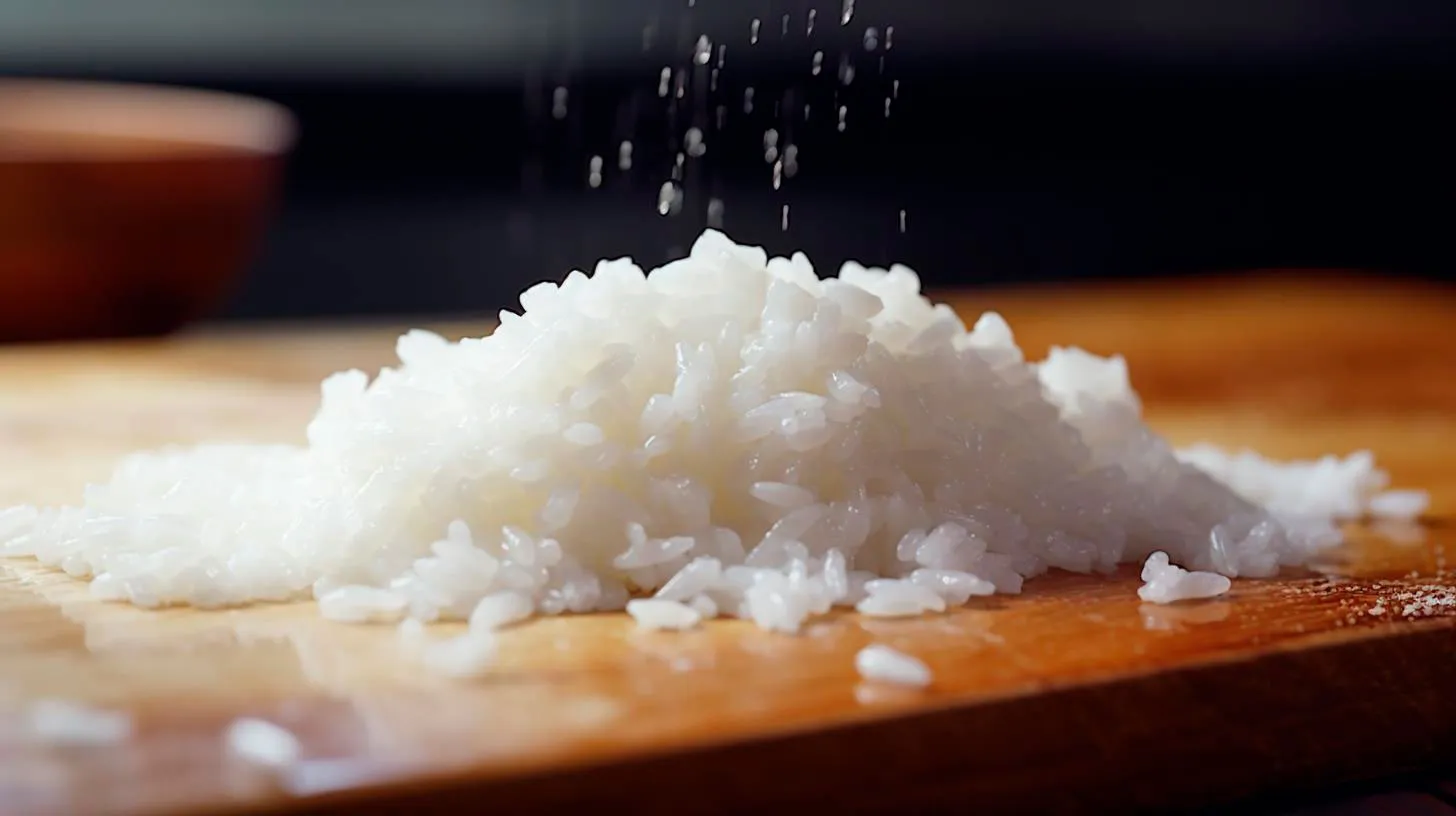Morning Flavors from Japan
In this article, we will explore the unique morning flavors from Japan, providing insights into the advantages they offer and some key takeaways for food enthusiasts.
1. Traditional Japanese Breakfast
The traditional Japanese breakfast, known as “Asa-gohan,” is a complete meal that provides a balanced start to the day. It typically consists of steamed rice, miso soup, grilled fish, pickles, and a side dish like tamagoyaki (rolled omelet) or natto (fermented soybeans). This combination offers a mix of protein, carbohydrates, essential nutrients, and probiotics, making it a nutritious and filling option.
- Advantages:
- Highly nutritious and well-balanced meal
- Provides sustained energy for the day
- Rich in omega-3 fatty acids from grilled fish
- Miso soup aids digestion and supports gut health
- Natto enhances gut flora with beneficial bacteria
- Key Takeaway: The traditional Japanese breakfast offers a combination of flavors and nutrients that can kickstart your day in a healthy and delicious manner.
2. Onigiri: The Convenient Breakfast
For those on the go, onigiri is a popular and convenient breakfast option. Onigiri are rice balls filled with various ingredients and wrapped in seaweed. They come in a variety of flavors such as salmon, tuna, pickled plum, and more. Onigiri are easily portable and can be enjoyed as a quick and satisfying breakfast or snack.
- Advantages:
- Portable and convenient breakfast option
- Customizable with a variety of fillings
- A good source of carbohydrates for energy
- Seaweed provides essential vitamins and minerals
- Key Takeaway: Onigiri offers a delicious and practical way to enjoy a flavorsome breakfast, especially for those with busy schedules.
3. Japanese Bakery Delights
Japan is renowned for its delightful array of baked goods, often featuring unique flavors and textures. From fluffy melonpan (sweet bread) to savory items like croquettes and curry buns, Japanese bakeries offer a wide range of breakfast options to satisfy different taste preferences.
- Advantages:
- Wide variety of flavors and textures
- Perfect for those who crave a sweeter or savory breakfast
- Easy to grab and enjoy on the go
- Opportunity to experience unique Japanese flavors
- Key Takeaway: Japanese bakeries bring a touch of sweetness and creativity to breakfast tables, providing a delightful start to the day.
4. Japanese Tea Culture
Pairing your breakfast with a cup of Japanese tea is a wonderful way to enhance the overall experience. From delicate green teas like matcha to aromatic varieties like sencha and genmaicha, Japanese tea offers unique flavors and numerous health benefits.
- Advantages:
- Promotes relaxation and overall well-being
- Rich in antioxidants that boost the immune system
- Provides hydration and aids digestion
- Enhances the breakfast experience with diverse flavors
- Key Takeaway: Adding a cup of Japanese tea to your breakfast routine not only elevates the flavors but also brings numerous health benefits.
Conclusion
Exploring the morning flavors from Japan can be a delightful and enriching culinary experience. Whether you opt for a traditional Japanese breakfast, savor onigiri on the go, indulge in the delights of Japanese bakeries, or complement your breakfast with Japanese tea, there are flavors to suit every taste and lifestyle.
By incorporating elements from Japanese breakfast culture into our morning routines, we can embrace the nutrient-rich and diverse world of Japanese cuisine. So why not kickstart your day with a taste of Japan and discover the wonders it can bring to your breakfast table?
Rise and Shine Japanese Breakfast Delights
In this article, we will explore the rich culinary heritage of Japanese breakfasts and discover some of the key dishes that make them so special.
The Japanese Breakfast Tradition
Breakfast holds a significant place in Japanese culture, with great emphasis on starting the day with a wholesome and nutritious meal. Japanese breakfasts are known for their balance of flavors, textures, and nutritional value. Typically, these breakfasts consist of a combination of rice, soup, grilled fish, fermented foods, and pickles.
Key Dishes and Delights
1. Rice
Rice is a staple in Japanese breakfasts and is usually served steamed and accompanied by various toppings. Common toppings include furikake (dried seaweed and sesame sprinkle), natto (fermented soybeans), and tsukudani (preserved vegetables or seafood).
2. Miso Soup
Miso soup is a traditional Japanese soup made from fermented soybean paste. It is packed with umami flavor and often includes ingredients like tofu, seaweed, and green onions. Miso soup provides a savory start to the day and is known for its numerous health benefits.
3. Grilled Fish
Grilled fish, such as salmon or mackerel, is a popular protein choice for Japanese breakfasts. The fish is often marinated in soy sauce or sake and then grilled to perfection. This dish provides essential Omega-3 fatty acids along with a burst of flavors.
4. Tamagoyaki
Tamagoyaki, a rolled omelet, is a beloved dish in Japanese breakfasts. Made by rolling together multiple layers of seasoned eggs, it is both delicious and visually appealing. Tamagoyaki is a good source of protein and can be customized with various fillings like vegetables or cheese.
5. Fermented Foods
Japanese breakfasts often feature fermented foods like natto, pickles, and tsukemono. These foods provide probiotics that promote gut health, aid digestion, and strengthen the immune system. Natto, in particular, is rich in protein, fiber, and vitamin K.
The Advantages of Japanese Breakfasts
Japanese breakfasts offer several advantages that make them stand out from other morning meal options. These advantages include:
- High nutritional value, providing a balanced combination of carbohydrates, proteins, healthy fats, and vitamins.
- Health benefits derived from fermented foods, which contribute to gut health and overall well-being.
- Lower risk of obesity and related health conditions due to portion control and nutrient-dense ingredients.
- Improved focus and productivity throughout the day, thanks to the stable release of energy from complex carbohydrates like rice.
- The inclusion of fish in the morning meal, which boosts intake of essential Omega-3 fatty acids.
Key Takeaways
Japanese breakfasts are not only delicious but also nourishing for both the mind and body. The combination of rice, soup, grilled fish, fermented foods, and pickles ensures a nutrient-dense start to the day. Some key takeaways from this article are:
- Japanese breakfasts prioritize balance and nutritional value.
- Traditional dishes like miso soup and grilled fish provide unique flavors and health benefits.
- Fermented foods in Japanese breakfasts contribute to gut health and immunity.
- Portion control and nutrient-dense ingredients contribute to weight management.
- Include Japanese breakfast delights in your morning routine to experience a wholesome start to the day.
So why not elevate your breakfast game by trying out some delicious Japanese dishes? Embrace this unique culinary tradition, and let it brighten your mornings with its delightful flavors and healthful benefits.
Savoring Sushi at Sunrise
One such experience that has captivated the world is the art of sushi making. In this blog article, we’ll delve into the rich history of sushi, explore its health benefits, and discuss how technology has revolutionized the way we enjoy this delectable cuisine. So, grab your chopsticks, and let’s dive into the world of sushi at sunrise!
The Origin and Evolution of Sushi
Sushi, a Japanese delicacy enjoyed by millions worldwide, has a fascinating history that dates back to the 6th century. Originally, sushi was developed as a method to preserve fish by fermenting it with rice and salt. Fast forward to the Edo Period (1603-1868), and we see the birth of nigiri sushi – the familiar slices of fresh fish atop bite-sized rice portions. It wasn’t until the late 19th century that sushi gained popularity outside of Japan, evolving into various forms such as maki rolls and sashimi.
Key points:
- Sushi originated in the 6th century as a preservation method for fish.
- Nigiri sushi, the most recognizable form of sushi, was developed during the Edo Period.
- Sushi evolved into different variations, including maki rolls and sashimi.
The Health Benefits of Sushi
Beyond its exquisite taste, sushi is praised for its numerous health benefits. The use of fresh raw fish provides an excellent source of lean protein, omega-3 fatty acids, and essential minerals. Additionally, seaweed, a common ingredient in sushi, is rich in vitamins and minerals while being low in calories. Studies suggest that regular consumption of sushi may reduce the risk of heart disease and promote brain health.
Key points:
- Sushi is a great source of lean protein and omega-3 fatty acids.
- Seaweed, commonly used in sushi, is packed with essential vitamins and minerals.
- Regular consumption of sushi may have cardiovascular and brain health benefits.
The Technological Advancements in Sushi Making
With technology permeating every aspect of our lives, the sushi industry has not been left behind. Innovations in robotic automation have revolutionized the sushi-making process, enhancing efficiency without compromising quality. Automated sushi machines can precisely measure and shape rice portions, allowing chefs to focus on the artistic presentation of the dish. Furthermore, mobile apps now allow customers to explore menus, customize their orders, and even receive sushi deliveries at their doorstep.
Key points:
- Robotic automation has improved the efficiency of sushi production.
- Precise rice portioning by automated machines allows chefs to focus on presentation.
- Mobile apps have simplified the sushi ordering process, including customized orders and doorstep delivery.
Key Takeaways
Sushi, born out of tradition and refined through centuries, remains a culinary delight that reflects Japan’s rich culture. From its humble origins to its modern tech-infused advancements, sushi continues to captivate food enthusiasts around the globe. So, the next time you indulge in a plate of beautifully crafted nigiri or savor a bite of a mouthwatering maki roll, remember the history and technology that have made this gastronomic experience possible.
Key takeaways:
- Sushi is a culinary delight showcasing Japan’s rich heritage.
- From its traditional roots to modern advancements, sushi has evolved over time.
- Technology has enhanced the efficiency and accessibility of sushi production and delivery.
Satisfy your taste buds and embrace the fusion of tradition and technology – it’s time to savor sushi at sunrise!
Exploring the Traditional Breakfast Dishes of Japan
Join us as we dive into the traditional breakfast dishes of Japan, highlighting their unique flavors, health benefits, and cultural significance.
1. Traditional Rice Dishes
- Tamago Kake Gohan: This simple yet delicious dish consists of a raw egg mixed with soy sauce and poured over hot rice. It is often enjoyed with toppings such as green onions, furikake (rice seasoning), or pickled vegetables. Tamago Kake Gohan provides a protein-packed start to the day and is believed to boost energy levels.
- Okayu: Commonly known as rice porridge, Okayu is a comforting and easily digestible option for breakfast. Cooked with water or broth, it can be customized with toppings such as umeboshi (pickled plums), nori (seaweed), or even salted salmon. Okayu is a popular choice for those seeking a light and gentle start to the day.
2. Traditional Soup Dishes
- Miso Soup: A staple in Japanese cuisine, Miso soup is a savory soup made from fermented soybean paste. It is typically served with tofu, seaweed, and green onions. Miso soup is packed with essential vitamins and minerals, and studies have shown that it may have immune-boosting and digestion-improving properties.
- Chawanmushi: This unique dish is a steamed savory egg custard, often flavored with soy sauce and dashi (fish stock). Chawanmushi can be filled with various ingredients such as shrimp, mushrooms, or ginkgo nuts. It is a delicate and elegant breakfast option that is not only delicious but also high in protein and low in calories.
3. Traditional Side Dishes
- Natto: Made from fermented soybeans, natto is a polarizing Japanese breakfast staple. It has a distinct, strong smell and a sticky texture. Natto is an acquired taste but is well-known for its numerous health benefits. It is an excellent source of protein, vitamin K, and probiotics, promoting healthy digestion and strong bones.
- Tsukemono: Tsukemono refers to a variety of pickled vegetables that are commonly served as a side dish. The pickling process not only enhances the flavors but also preserves the vegetables and increases their nutritional value. With a wide range of options, such as cucumbers, daikon radish, and cabbage, tsukemono adds a refreshing and crunchy element to the breakfast table.
4. Key Takeaways
Exploring the traditional breakfast dishes of Japan unveils a world of flavors and cultural significance. These dishes not only taste incredible but also offer several health benefits. Here are the key takeaways:
- Japanese breakfast often includes rice dishes such as Tamago Kake Gohan and Okayu, providing a wholesome and energizing start to the day.
- Miso Soup and Chawanmushi are flavorful soup dishes packed with nutrients, promoting a healthy immune system and digestion.
- Natto and Tsukemono are unique side dishes that offer a balance of taste and health benefits like probiotics, vitamins, and minerals.
Embracing the traditional breakfast dishes of Japan allows travelers and food enthusiasts to immerse themselves in the country’s rich culinary heritage. These dishes not only nourish the body but also provide a deeper connection to Japanese culture. So, next time you visit Japan or simply want to add variety to your breakfast, give these traditional dishes a try and awaken your taste buds to a whole new world of flavors.



